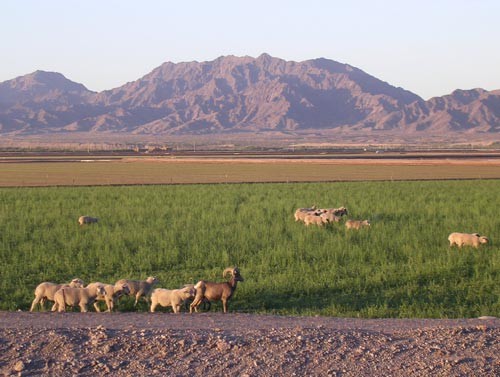Bighorn sheep undergoing COVID-like test
If only the bighorn sheep knew to socially-distance from their domestic cousins
Sick people aren’t the only ones getting tested with deep nasal swabs. Bighorn sheep from Lillooet all the way to Williams Lake, along both sides of the Fraser River, are having their nasal cavities tested for disease.
“It’s got some really interesting parallels with COVID-19 in that you’re looking for it (with a) deep nasal swab and you’re doing the exact same test. It’s called a PCR test. You’re looking for the DNA of in this case it’s a bacteria, in COVID it’s a virus but it’s really similar,” says Jeremy Ayotte with Phyla Biological Consulting.
For years, bighorn sheep in the area have seen sharp declines. For example, in one area (Junction Deer Park) survey counts decreased from 425 in 1995 to 154 in 2015, with a low of 96 in 2007. In another area (Churn Creek) counts fell from 658 to 108 in that same time with a low of 73 in 2012.
“The Fraser River is a really important, what we call, a meta-population for California bighorn sheep specifically. It’s got over 60 per cent of Canada’s bighorn sheep between Lillooet and north to the junction sheep range there: so a really important population. We’ve actually transplanted a lot of bighorn sheep out of there into the (United) States over the years. So the States is very supportive.”
Some bighorn sheep in the area are infected with mycoplasma ovipneumoniae (Movi), says Ayotte, who is conducting a project to improve fade out of the pathogen.
“This bacteria causes a pneumonia outbreak in wild sheep and the bacteria only comes from domestic sheep and domestic goats,” he says “We were kind of thinking that the disease was to blame for a lot of the declines in several bands of bighorn sheep up and down the Fraser River. They’d gone through a real significant decline in population and they hadn’t recovered and that’s pretty typical when you get this disease in bighorn sheep. It kills off 60 to 90 per cent of them right away but then it just persists in the population.”
The ewes that survive will pass it on to each new crop of lambs which results in really low lamb recruitment (new individuals added to the adult population). Typically, they’d see a normal number of lambs in early June but next to zero by late summer.
“That’s what we were seeing in the Fraser River for several years. Low lamb numbers and populations that have declined and haven’t recovered. So we suspected that the disease was the cause.”
The lambs are fine while they’re on their mother’s milk and getting antibodies to pneumonia but as soon as they’re weaned, in the late summer, they die of pneumonia, he says. They were able to confirm that that’s what was happening based on the low lamb counts.
In order to test the sheep, they helicopter capture them before administering a nasal swab. In the winter of 2019, they caught 52 in the Kamloops region (region 3). Five per cent had the disease and 10 per cent were carrying antibodies portion of the study area.
“Those numbers were a little bit of a surprise in that we had disease on both sides of the river. We knew that there was some domestic sheep farming there in the past and there were signs of pneumonia die-offs in some groups of sheep but we found it more prevalent than we thought.”
In year two (this winter), they conducted more intensive sampling looking for the prevalence of the disease and removed the sheep that were positive, which follows an approach that was started in the United States.
“The approach we took was to see if we could remove some of these chronic shedding adult female ewes and turn the population around.”
About 11 out of 50 were positive and euthanized, he says. They’ve set up some lamb monitoring in those areas and will be continuing to test that band of sheep. They hope to see lamb recruitment increase in the treatment band compared to a control band and are hoping to see the prevalence of the microplasma bacteria decrease.
“This is a really novel approach. It’s never been done before in Canada.”
A documentary on the project is expected to come out in the future.
They did initial testing on the Cariboo (region 5) side this winter but don’t have all the results back yet, says Ayotte. By mid-summer, they’ll have results from that testing.
A crucial part of the story is to develop policy around B.C. sheep separation, says Ayotte.
“What this Fraser River project is showing us is that the complexity and the cost of trying to manage this disease once it’s on the landscape is far more difficult and expensive compared to trying to keep domestic sheep farms out of these bighorn sheep ranges,” he says. “If only the bighorn sheep knew to socially-distance from their domestic cousins, or people could keep distance between domestic sheep farms and wild sheep ranges.”
Newly announced funding for the project in May from the Habitat Conservation Trust Foundation totalled $34,150 following $20,150 the year before. The total cost is $150,000 with the initial funding and support coming from the Wild Sheep Society of BC and the Wild Sheep Foundation.


